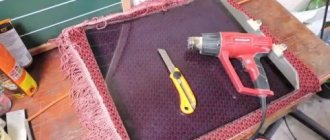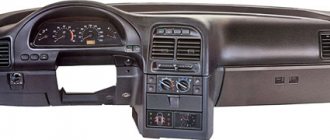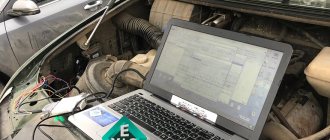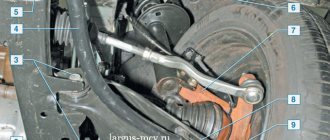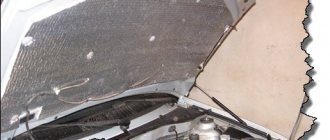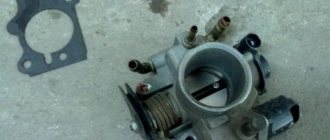Every driver, looking under the hood, often sees the power unit covered in dirt and oil. Then the car owner has a question: how to wash the engine yourself? Another interesting article: how to wash a car correctly.
Before you start washing, you need to thoroughly inspect the engine compartment for the presence of electronics and other electrical modules. If you have a new foreign car, most likely there will be a lot of sensors, relays, and so on on the engine, it is better to wash such a car in a car wash because if you fill all the electronics of the car with water, then it may not start until the water dries, and even worse you can burn something.
Although car washes are also different, many will not give you any guarantees, so the choice is up to the car owner. Repairs in this case can be very expensive.
Pros of engine washing
If you still have an older car, the engine is clearly visible from all sides, and there are almost no electrical units, then you can try to wash the engine yourself.
A clean engine is not only beautiful, but also very useful. A dirty engine overheats much faster than a clean one. If there is dirt near the hole into which the dipstick is inserted to check the oil, there is a high probability of abrasive particles getting into the engine crankcase when checking the oil level.
It is also bad if the electrical wiring is dirty, there may be current leakage through it, which will lead to deterioration in engine performance. Even if moisture gets on such electrical wiring, it will already become electrically conductive. From this we conclude that it is necessary to wash the engine not only for aesthetic reasons.
How and with what to wash the engine yourself?
Before washing your car, it is recommended to remove the battery from the car and cover all electrical appliances with plastic bags to prevent water and cleaning agents from getting into them.
What product will we use to wash our engine? It is better, of course, to buy a special solution for washing power units. But you can also use improvised means, which are much cheaper and much easier to find.
1. You can choose regular diesel fuel; it will cope well with oil and dirt on the engine, but there are many disadvantages when using it. It leaves behind a greasy coating on the engine, to which all the dust will again stick. Plus, diesel fuel is also a fire hazard.
2. A solution of ordinary washing soap diluted in warm water will be more favorable and safe. Once we have decided on the cleaning solution, we can start washing the engine.
First we need to start it and warm it up to a temperature of 40 degrees, but no more! This is done to improve the release of oil stains on the engine. As soon as the engine has warmed up, apply a solution of soap and warm water to the contaminated surfaces with a regular rag and wait for 10-15 minutes until the dirt dissolves.
Now take a wooden or plastic scraper and remove dirt from the engine in flat areas. When the main layer of dirt is removed, take a brush for shoes or clothes, it makes no difference, as long as it is hard and remove the remaining dirt. In hard-to-reach places, you can use a toothbrush.
After only small stains of oil and dirt remain on the engine, take a rag soaked in a soap solution and wipe the whole thing off.
After washing, you need to take a compressor, or, in extreme cases, a vacuum cleaner, and thoroughly blow off every part of the power unit so that there is no moisture left anywhere.
The engine does not need to be pressure washed. After such a wash, water enters the distributor, air cleaner, spark plug wells and other electronic control units. Also, water gets into the wire connectors and does not dry out for a long time, several days, and provokes corrosion.
The battery must be replaced and connected only after the engine has completely dried out. Don't forget that a clean engine is easier to keep in good condition. So wash it more often, especially after winter, because in the cold season the power unit gets exposed to more aggressive substances that cause corrosion.
2 What products are needed to wash the engine yourself?
Regular household cleaning products are not suitable for washing the engine and engine compartment, although some drivers use them. The reason is that kitchen cleaners are designed to remove plant compounds. The chemical composition included in household chemicals can have a harmful effect on rubber parts and engine gaskets. They can dry out or harden, thus losing their performance properties.
If you choose the right cleaning products, you can achieve good results. The automotive market has a wide selection of chemicals in the form of liquids and aerosols. The most common liquids are shampoos. They are good for cleaning hard-to-reach places. Due to their liquid state, they penetrate into the furthest parts of the engine, washing away stubborn dirt. Shampoos do not contain abrasive particles, so they do not scratch the surface of parts, but they can be used to polish.
The choice of engine cleaning products is truly great - everyone chooses what is more convenient for him to use
To wash engines, you should not use car shampoos for washing the outside of the car, but white spirit.
Aerosols are convenient to use for modern cars that have tight spaces under the hood. They can be applied to hard-to-reach places without disassembling the engine. In stores you can find special powder for washing the engine. It is used if dirt and dust are strongly embedded in the metal surface. Powders contain caustic chemicals, so you need to wear rubber gloves when handling them to protect your skin. Cleaning should be done in a well-ventilated area, preferably outside.
It is better to buy special chemicals from well-known brands to clean your car from oil and other contaminants:
- “Motorraum-reiniger” from Liqui Moly;
- TurtleWax “High Tech Engine Clean”;
- car shampoo for engines from AT VNII Khimproekt;
- “Cleansing agent for engines and units” from AutoStudio.
There are concentrated liquids that are inconvenient to use because they need to be diluted, but with their help you can wash off heavy stains the first time.
We recommend: Top 15 best transmission oils for cars
The need to periodically wash the engine
Dirt and excess oil on the outer surface of the engine make it difficult to visually locate lubricant or coolant leaks. Also, too large a layer of deposits can disrupt the temperature regime of the engine, which will lead to excessive fuel consumption, and subsequently to increased wear of rubbing parts. Dirt under the hood tends to get not only onto the engine, but also onto the elements of the car's electrical network, which causes a short circuit. If oil leaks are not removed promptly, vapors are formed that are highly flammable and can lead to a serious fire.
Preparing to wash a car engine
- Before washing the engine, you need to close all sensors, relays and other devices for which you do not want water to enter. Aluminum foil is perfect for this. It masks the engine elements and stays in place well. The foil takes the shape of the parts wrapped in it and does not interfere when cleaning the engine.
- You need to spray regular clean water on the parts around the engine compartment. This will make it easier to wash off engine cleaner from adjacent parts that may get on them when washing the engine compartment and engine. If this is not done, the dried product will leave marks that are not easy to wash off.
- Do not wash a hot engine. It is better to plan a wash after the engine has completely cooled down. To loosen oil and dirt accumulated on the engine and its components, it is best to warm up the engine for a few minutes until it is warm. The best temperature for washing the engine is such that the engine is warm to the touch.
How to wash a car engine yourself
If the question arises about how to wash a car engine at home, then there will be several options. The motorist can use a pressure washer or car engine cleaner. Steam cleaning has also gained popularity recently. It is necessary to dwell in more detail on each of the methods.
Cleaning a Karcher washer at home
If you have the necessary equipment, you can wash your car engine with a Karcher. This method allows you to thoroughly clean the engine of dirt and oil. But it is worth remembering that high-pressure washers can damage the insulation and knock off the stickers on parts. It is also possible for water to enter the connectors, causing electrical equipment failure. Therefore, you need to make sure that the pressure is not too high.
How to properly and safely clean an engine with detergent
There is another option on how to effectively and properly wash a car engine. In this case, you don’t even need any equipment. It is enough to take water and purchase a special liquid for washing the engine. The procedure will be as follows.
- First you need to wait until the engine cools down (if this is not done, the cylinder head may become deformed). Next, all preparatory work is carried out.
- The product is applied according to the instructions that come with the liquid.
- Problem areas are additionally cleaned with a brush.
- After the period of time specified in the instructions, the product is washed off.
- The protective film is removed.
- The engine is drying out. If possible, you can use compressed air. Otherwise, just letting the car sit for a while is enough.
- The engine is started to check if washing the engine yourself has caused any harm.
WATCH THE VIDEO
Steam washing
This option combines the advantages of the other two methods. In this case, the motor is not harmed due to pressure, but at the same time, the effectiveness of the procedure remains high. Equipment for such cleaning is available at car washes (although it will cost more than using a high-pressure washer).
WATCH THE VIDEO
To be or not to be?
The answer to the question “is it possible to wash a car engine” has not caused heated debate for a long time. It is not only possible to wash the engine, but also necessary. There are a number of simple reasons for this:
- heat transfer improves. The adhesion of a thick layer of mud deposits prevents the heat exchange of the engine block and cylinder head with the atmosphere. If in winter this cannot affect the operation of the engine, then in hot weather the accumulation of dirt can lead to overheating. This is especially dangerous when driving in a traffic jam, when there is no airflow to the radiators, and the air conditioning system is turned on in the car. A dirty engine will only make the situation worse if the radiator is clogged. In some cars, when washing the engine compartment, you have access to the radiator. But for a guaranteed effect, the cooler must be removed and then washed on both sides with a Karcher;
- reduction of fire hazard. Leaks in the connections of the cylinder head, cylinder head, and oil pan, which is quite normal for many used cars, leads to the appearance of oil deposits. In the event of a fire in the engine compartment, the oil helps the flame spread.
You can wash the internal combustion engine not only for aesthetic pleasure, but also to improve the quality of repairs. After washing the engine it is always easier to identify leaking seals. Due to its composition, the oil quickly occupies a significant area around the fogging perimeter. Therefore, over time, it is more difficult to determine the source of the problem. If you are repairing your car yourself, then it will be superfluous to talk about the inconvenience that crumbling dirt causes. The ingress of dirt can affect the operation of some mechanisms and the quality of the connection of parts.
Is it possible to “kill” a motor by washing?
Consequences of violation of internal combustion engine rinsing technology:
- the car does not start;
- the engine starts, but then immediately stalls;
- unstable operation (motor troubles);
- Certain electrical appliances do not work;
- lack of traction, dips when pressing the gas.
As we can see, the main catalyst for trouble is electronics, since mechanical components are reliably protected from moisture. The meanness also lies in the fact that certain symptoms may appear only after some time (oxidation of contacts). And if spark plug wells and distributor contacts flooded with water can be dried, thereby eliminating most of the problems in the operation of the internal combustion engine, then failure of the ECU is a harbinger of large investments. If there are important control units, and especially ECUs, in the engine compartment of your car, the car should be prepared before washing.
Using high pressure washers
The design of the engine compartment of each car requires a certain level of protection of important components and assemblies from moisture. But since under normal operating conditions the amount of moisture is very small, washing the engine with a Karcher can really harm the car.
Using a jet of water under high pressure leads to water “clogging” even the most secluded corners of the engine compartment. As a result, water can leak to the contacts of electrical appliances, actuators, and sensors of the engine power system. But most of all, you should be wary of moisture getting into the ECU, which can burn it, or into the fuse box, some of which are located in the engine compartment in many cars. This is why you need to wash your car engine correctly.
Preparing the engine for washing
It is best to do this if there is any breakdown. Then the engine is removed from the car, all attachments are removed and the patient is ready for the procedure. However, it gets dirty much more often than it breaks, so everything will have to be done on the spot. This is the whole problem. In addition to a metal block that is invulnerable to water, under the hood there are various sensors and electronic systems, of which there are more than bolts in a modern car. If even a drop of moisture gets on them, you can take the car to a car service center, since something will definitely not work. To prevent this from happening, you need to follow some recommendations and be as careful as possible in this matter.
- Logically, you need to first protect the electronic part, which can be done with ordinary wide tape. We disconnect and remove the battery, and then wrap the terminals. Carefully inspect all sensors and wire connections that are located outside, and try to insulate them as best as possible. You won't be able to provide guaranteed protection, but it doesn't hurt to be insured. Pay special attention to the ignition and generator so as not to fill them with water.
Insulating parts from water
- After the electronic part, you can deal with the protection of the engine compartment, which is bolted to the car body at the bottom. Removing it gives you access to the front of the engine.
Removing the engine compartment protection
- The next step will be to protect the contacts and connectors. This can be done using special compounds sold in aerosol cans. They have a water-repellent property, which will preserve connections made of non-ferrous metals from corrosion.
Special product for protecting electrical contacts
- The most extensive part of the work remains - dismantling the attachments. Here, the more you can remove, the more convenient it will be to wash. Ideally, there should be only one block with a head left. Then you will be able to get into almost all places and make the engine as clean as possible. At this point, the main thing is not to unscrew the spark plugs, since water should not get inside the cylinder.
It is recommended to remove all attachments from the vehicle
When removing equipment, pay close attention to how it was positioned. It is better to put everything dismantled in one place so as not to lose it. The important part is also disconnecting the wiring. Here, too, you need to monitor how all the chips are connected, since in the future it will take a lot of time to find the right connector.
After washing the engine the car does not start, what should I do?
Often after washing the engine it does not start and this is common. The main reason is moisture entering the electronics system, which does not allow the engine to start, but at this very moment the starter is spinning and there are attempts to seize, but the unit cannot start. Moisture gets in due to the main mistake - washing under high pressure reaches 100-150 bar, due to which the water flow can penetrate anywhere, even into the spark plugs.
The biggest problem after washing the engine is with the ignition system. To solve it, you need to disassemble the distributor and wipe everything dry, then blow it with a compressor, wipe the wires, dry the wells for installing spark plugs with a compressor, and then you can start the car.
In models where individual ignition coils are installed instead of a distributor, you need to remove each one separately and blow out the wells; it is also worth blowing out the entire engine and engine space with a compressor and additionally leaving it to dry for 3-4 hours with the hood open. By the way, it is better to carry out all of the above actions before the first start of the engine after washing, otherwise, if moisture is found where it is now described, you can get several non-working coils. Often the coils remain unharmed, but the spark plugs themselves fail and only need to be replaced with new ones.
We recommend: When should you change the oil in a manual transmission?
If water gets on electrical equipment
The main common troubles that car owners may encounter after washing the engine compartment are:
- the car won't start
- the car is shaking
- the car jerks
- revs are floating
- oil pressure light came on
- the check light came on
Let's look at the possible causes and solutions for each individual malfunction in more detail.
If everything is dried and connected, the battery and its terminals are in order and tightened, the starter turns and the fuel pump pumps, but the car does not start after washing, then you should once again pay attention to the ignition system.
- In those machines that are structurally equipped with a distributor, you will need to remove water from under its cover by blowing it out and wiping it dry. Next, we wipe all the armored wires, unscrew and inspect the spark plugs, and dry the spark plug wells.
- If a car has a distributorless ignition system and has separate coils for each cylinder, then all of them will have to be removed and dried. The remaining actions are similar to working with the distributor option. The main rule is to blow and dry all accessible wires in the engine compartment, because no one is immune from unnoticed damage to their insulation.
- Failures in the operation of the internal combustion engine are commonly called “triples”. During such failures, one of the cylinders stops functioning normally. The driver immediately feels an increase in the amplitude of the engine and constant strong vibration. At various speeds and at idle, the engine runs with skips and dips. This behavior of the machine is often due to similar reasons indicated in the first paragraph. We carefully inspect the armored wires and spark plugs and dry the spark plug wells.
- When driving, the car jerks noticeably, there is an increase in fuel consumption and a drop in power. If the methods described above did not help normalize the operation of the internal combustion engine, then problems with the engine sensors are possible. They may occur due to the fact that the alkaline shampoo has damaged them during the washing process.
- Floating speed indicates that after washing there are problems with the throttle valve or throttle position sensor. These elements require cleaning and drying, and it is also advisable to reboot the ECU with the engine by resetting the terminals for 10-15 minutes.
- The oil pressure light on the dashboard may come on for a number of reasons. The first is that the same water gets on the oil pressure sensor and its contacts, which are very often located directly under the oil filter. The second reason may be the already familiar water getting into the candle wells. It is treated by mandatory drying and/or replacement of failed parts.
- The "check engine" warning light, referred to simply as a "check" by motorists, is a clear indicator of a malfunction. Such a signal on the instrument panel appears as a result of errors and malfunctions in the operation of the internal combustion engine, which are recorded by numerous sensors, but does not carry any specific information. The problem can only be localized by reading the indicated engine errors from the ECU memory using a special scanner at a service station.
After washing the engine compartment, especially with a Karcher, the sensors and their connectors are exposed to intense contact with detergent and water, so any malfunction in the operation of the engine itself or just the sensor will cause a “check” to appear. Sometimes the problem goes away on its own as the contacts dry completely or the problem is eliminated. In some cases, the same reset of the battery terminals for a few minutes helps, which allows you to reset the error.
Engine washing methods
When the question of how to wash a car engine has been decided, let’s decide how to do it. And here are some common methods :
- Dry cleaning . Use liquid or foam in an aerosol can. There is no need to rinse with water after applying the substance. Before using such a product, it is necessary to warm up the engine , but not to a too hot state. If you apply the product to a cold engine, cleaning will not be effective. It is prohibited to apply to some parts of the internal combustion engine; this is indicated in the instructions. The process itself is also very labor-intensive.
- Steam washing . This professional method is not suitable for home use. Only a specialist knows how to properly wash and not damage the engine.
- Karcher . Not the safest method of contactless cleaning. High pressure water can damage some parts of the internal combustion engine. A small amount of liquid can also get inside the motor and cause damage or corrosion.
- Rinse with water . A special cleaning agent is first applied. After some time, it is simply washed off with a stream of water. This method is the most common, but does not protect against moisture getting into the motor.
The engine compartment needs to be flushed only once a year.
Useful tips
- Before using the detergent, you should carefully read the instructions .
- Be sure to first prepare the engine for washing.
- If possible, you should first remove dirt from the surface by wiping the engine with a rag.
- When washing a car with water, be sure to dry it with a compressor.
- Then you need to check the car . If it starts as usual, then everything was done correctly. If the motor stalls or extraneous noise appears, something went wrong during the washing process.
Cleanliness is the key to the health of the machine. The car enthusiast will be sure that the iron horse will not fail at the wrong moment. The main thing is to know how and with what to wash a car engine. Try to clean the engine of your iron horse at least once a year. Then many breakdowns can be avoided.
Why do you need to wash the engine and engine compartment?
You need to wash your car's engine compartment once or twice a year. At the same time, answering the question of why to do this, it is worth giving the following arguments:
- a clean engine does not heat up, since dust acts as a body insulator and creates additional load on the car’s cooling system. If you wash it off, the motor will run smoothly, without interruption.
- If the engine compartment is clean, it is easier to maintain.
- In a dirty engine compartment, fires may arise from leaks of gasoline and automobile oil. For this, a simple spark or a breakthrough of exhaust gases is enough.
- Washing the engine is also necessary because it allows you to independently detect a leak on the clean surface of the power unit. As a result, it becomes possible to take timely measures without waiting for the situation to worsen.
- Before selling, the engine must also be washed in order to show the potential buyer that it works without interruption. In addition, a clean engine compartment allows him to adequately assess the technical condition of the engine.
Drying the engine
After finishing the procedure, the washed engine compartment and the engine itself must be dried with a dry paper towel or rag. Moreover, if after this it is discovered that there are traces of corrosion on the elements of the engine and engine compartment, their locations must be cleaned using baking soda and water in a 1:1 ratio. The washed and treated engine should be started and run to check its performance.
How and with what to properly wash the engine?
To properly wash the engine, you should not use ordinary water, but only under high pressure. If you wash the motor in this way, you can harm the insulation and provoke the rust process not only on external metal parts, but also inside the connectors of the electrical circuit. Rather than resorting to improvised means to wash a car engine of oil, it is best to use special car shampoos or foam cleaners that effectively remove oil deposits. You should not dilute ordinary laundry soap in water and try to wash off all the dirt with a similar solution. Household products will not help to properly clean the engine surface, but will only lead to a loss of time.
Step-by-step instructions for washing the power plant
In order to clean the power plant correctly and without consequences, you must adhere to the following rules and follow the instructions.
Step 1. Preparatory stage.
It is recommended to carry out the cleaning process in warm and dry weather. This way, the moisture remaining in the engine compartment will evaporate several times faster.
First, you need to prepare all available means in advance. We will need: personal protective equipment, foil or polyethylene, tape, a brush of different sizes (medium and small, for hard-to-reach places), a sponge, a rag, a cleaning agent, a container with water, a container for collecting remaining dirt.
Cleaning is carried out at an engine temperature of 50-60 degrees. If the engine has been started, then it is necessary to allow it to cool to the desired temperature. Otherwise, you need to start and warm up the engine to the specified temperature.
Next, open the hood and remove the terminals from the battery.
After that, using the prepared polyethylene or foil, we cover all the places where the electrical equipment is located and fix them with tape. We pay a lot of attention to the idle speed sensor, since if you overdo it and fill it with water, then there may be problems with idle speed.
Step 2. Precautions.
Personal protective equipment must be used. First of all, these are rubber gloves. Chemical cleaners can be harmful to your skin. In addition, contaminants in the form of oil are very difficult to remove. Therefore, rubber gloves and work uniform will be an integral part of this process.
In addition, we recommend using safety glasses whenever possible. Sprays and drops of cleaner may get into your eyes. Glasses will help prevent drops of cleaner, dirt and other foreign objects from getting into your eyes.
Step 3: Apply Cleaner
We carefully read the instructions for the purchased cleaner.
First, you need to rinse all contaminated surfaces with a small amount of water. Then the chemical is applied. If the product is in the form of an aerosol, then it is simply sprayed onto the required areas. If the product is in the form of a solution, then it is applied using a sponge. We recommend using a toothbrush to clean hard-to-reach places.
After application, wait the required time for the cleaner to interact with the contaminants. The duration is usually indicated in the instructions.
Step 4. Safety and environmental measures.
First of all, you need to carefully apply the cleaner. These mixtures are highly flammable and explosive, so safety regulations must be followed.
During the washing process, it is necessary to ensure cleanliness and not pollute the environment. If possible, any remaining dirt and oil should be collected in a container specially prepared for this purpose.
Step 5. Final stage
Finally, we rinse all the places where the cleaner was applied. It will be convenient to use a hose with low water pressure. It is worth noting that the engine compartment must be washed with caution, avoiding contact with electrical equipment, even though they are protected with polyethylene or foil.
After washing, we perform a visual inspection. If not all contaminants have been removed, then we carry out repeated cleaning.
It doesn’t take a lot of time or money to clean your engine from oil and dirt. You just need to follow the instructions and rules, and then your engine will shine and will not fail at the right time.
Sometimes you really want to treat your car with water treatments. However, if there is no question of whether or not to wash the body and interior of the car, then washing the engine raises some concerns. Now we will try to understand its intricacies and finally wash the engine with our own hands.
Apply cleaning agent
After the engine has warmed up a little and some elements have been protected from moisture, you can begin spraying the engine cleaner. Modern engine cleaning products act quickly and effectively. If the engine is not very dirty, then it is not advisable to use too aggressive products based on petroleum products or solvents. They quickly act on oil contaminants and stubborn dirt, but at the same time they destroy rubber tubes and plastic in the engine compartment. It is better to use water-based cleaners.
General purpose cleaners that can remove grease can be used.
Depending on how dirty the engine is, you need to let the cleaning agent soak into the dirt film for 3–10 minutes. Do not allow the cleaner to dry on the engine after spraying. This will leave traces of the product.
If the engine is not very dirty, then you can do without using a brush. In case of heavy contamination and stubborn dirt, it is better to use a brush with a long handle. For some hard-to-reach places, you can use a toothbrush.
After applying engine cleaner and, if necessary, using a brush, thoroughly rinse the engine and its components with water.
We recommend: Variable valve timing systems
If you use a pressure washer, do not apply too much pressure or spray water too close to electrical connectors to avoid damaging them.
Allow the water to dry briefly, then wipe accessible engine parts and plastic parts with a clean rag before the water dries itself to avoid leaving any traces of dried water. After wiping with a dry cloth, start the engine and let it run for a few minutes. This will help the remaining moisture evaporate.
Once everything is dry and the engine has cooled, it would be a good idea to apply a special protective coating for the engine. You can also apply a protective coating to the engine compartment plastic and rubber tubes.
Other car cleaning products
In stores and on the market you can find a lot of offers regarding chemicals for cars. One of the options for such products is a special powder for washing engines. When dirt and dust have become quite ingrained into the metal, such powders are used. Since these are very caustic substances, it is necessary to wear protective gloves when handling them. It is best to clean outside where there is good ventilation.
Sometimes it can be difficult to get rid of oil mixed with dust. These are the most problematic places in the engine, since such a lump of dirt is not so easy to get rid of. In this case, you need a small screwdriver, which you just need to pry off the dried oil. After this, you need to thoroughly moisten the problem area and wait a little until the solution soaks the remaining oil. Then remove everything else with a damp cloth.
Choosing a product: what is the best way to wash the engine?
A car engine cleaner is selected taking into account design features. On most older car models, the engine compartment has a lot of free space. Bottles with a hand sprayer are suitable here. If there is little space, then it is better to choose an aerosol.
In any case, mixtures cannot be used to clean the body. They have too much acid content and can adversely affect the condition of the parts. It is strictly prohibited to use gasoline or diesel fuel, as they are highly flammable. And dishwashing liquids are ineffective.
WATCH THE VIDEO
Engine cleaner can be found at a specialty store. The choice of substances is very large, so any car owner will be able to find a suitable option. Popular cleaners are: Autosol Schmutz (400 rubles for 500 ml), TurtleWax (300 rubles for 500 ml), and GUNK CL32 (550 rubles for 928 ml).
Some motorists prefer to make their own engine cleaner. There are many recipes for such mixtures and they all help wash oil off the engine with varying effectiveness. The simplest and most effective option is washing powder dissolved in warm water.
Do it yourself or contact a specialist
If you are faced with the need to wash the engine of your car for various reasons, but do not have experience in implementing this process, then the best option would be to contact a professional car wash that provides this service or a service station.
Please note that washing specialists are well aware of the process itself; they will correctly select and apply the necessary cleaning chemical composition. An additional motivation for visiting a car wash is the extensive experience of the service staff and the potential availability of a wide selection of specialized detergents.
Another argument in favor of a car wash can be the simple saving of your free time. It is worth avoiding those car washes where the client is informed that the service administration is not responsible for possible malfunctions after washing the engine.
This advice does not mean at all that having a Karcher at your personal disposal excludes the opportunity to properly wash the engine yourself. Having decided on the decision to wash the engine yourself, you also need to correctly select and purchase an engine cleaning product, have some tools available, and comply with all the necessary conditions and recommendations regarding engine washing. This approach will help to avoid many mistakes and prevent harm to the engine.
How to wash a car engine
After preparation, you can start washing. But for this you still need to choose the right tool. It should not harm the material from which the block and other parts are made, and also remove all oil deposits without any problems. Such substances are sold in any car store and are not very expensive, that is, there will be no problems with selection and purchase.
Engine cleaning products are many and varied.
Therefore, it’s easier to say what not to wash the engine, what products can harm it and what not. To find out, you also need to consider what material it is made of. Most often, the engine block is made of cast iron or aluminum alloy, therefore, it cannot be exposed to acid , which is found in large quantities in various products. You also need to be careful with plastic parts so as not to spoil them.
are NOT RECOMMENDED for washing the engine , as they are ineffective or dangerous:
- Dishwashing liquid. The worst and most hopeless option, since it cannot cope with machine oil.
- Gasoline, kerosene, diesel fuel and other flammable substances. Many people use them for cleaning due to the fact that they are powerful solvents. Once in the oil, it acquires the consistency of water, which means that removing it from the surface of the engine will not be difficult. However, they are all highly flammable, which puts an end to their effectiveness. If after the procedure there is even a drop of such a substance left under the hood, then a fire is guaranteed. In addition, solvents have a negative effect on plastic products.
- Water. A pointless waste of time that will yield no results at all.
An engine detergent should dissolve oil well and not contain acid in its composition, and also be safe and non-flammable. Almost all specialized liquids that are sold in a spare parts store have such properties. That is, in order to wash the engine quickly and without problems, it is best to buy the product.
How to wash a car engine at home?
You can wash a car engine at home yourself and this is accessible to everyone; the main thing with this procedure is not to wash the engine under high pressure and strictly follow the instructions. The engine compartment is washed differently, depending on the year of manufacture of the car. It is better to wash foreign cars produced since 2003 manually, using a damp rag or sponge, and it is important that the sponge is almost completely devoid of water. Before 2003, cars were washed both manually and with Karcher mini-washes, which have a nozzle for distributing the flow of water into several dozen weak jets mixed with air. You can wash new foreign cars this way, but be extremely careful.
To wash the engine you will need:
- Rags for initial cleaning of dirt;
- Thick bags for sealing electronics adjacent to the motor;
- Detergent brands: K&W, Liqui Moly, "VNIIkhimproekt" or dishwashing detergent of the "Fary" type for secondary cleaning of complex and medium-sized stains and a bucket of water to dissolve the detergent;
- A brush with plastic bristles for cleaning hard-to-reach places, a sponge for removing excess moisture;
- Dry towels or cloth, but always dry and clean, to remove remaining moisture in visible areas;
- A fan, if available, or a compressor for inflating tires for drying;
- A mini-wash, if available, for a faster cleaning process, replaces a bucket, brush, sponge, etc..
When washing the engine compartment, it is better to use household chemicals only in case of light contamination; for everyone else, you need professional chemicals that are aimed at removing heavy contamination.
Washing technology, or how to avoid stains?
Before you start washing, you need to prepare a high-pressure car wash, i.e. connect it to communications - electricity and water supply. To do this, the water supply must have a special fitting to which you will connect the hose. True, some models of mini-washes can take water from barrels, cans or even ponds. In this case, you just need to lower the supply hose into the water source.
Then you need to connect the high pressure hose to the foam nozzle. You need to pour foam into the plug'n'clean tank, which is connected to the nozzle. Keep in mind that the foam is sold in concentrated form, so it must be diluted with water in the ratio indicated on the package. When all the hoses are connected to the device, you can plug in the washer and start washing.
If you have separate products for rims and plastic surfaces, apply them to the contaminated areas. To do this, you can use a regular sprayer. While the chemistry reacts with the dirt, we move on to the main part of the work - contactless car washing.
Many car enthusiasts make the mistake of starting washing by soaking and removing the main dirt. If you want to achieve a perfectly clean surface without streaks, you must follow the technology from start to finish. In particular, the foam should be applied to dry dirt, as a result of which it reacts better.
It is necessary to apply the composition with horizontal movements, from bottom to top, but not vice versa. This is important because the lower strip, reacting with dirt, prevents the upper strip of foam from flowing down. This not only saves money, but also improves the quality of washing. Keep in mind that when applied, the foam strips should slightly overlap each other, due to this, there will be no untreated areas on the surface.
Pay attention to the concentration of the solution: if it is too low, sediment will form on the surface of the body. Determine the concentration yourself “by eye” so that the foam is thick enough.
An important point is the exposure time of the foam to the dirt: if you wash off the detergent too early, it will not have time to react, and accordingly, the dirt will not be removed properly. If the foam is overexposed, the “raised” dirt will begin to fall onto the body in the form of sediment, which will subsequently lead to the formation of streaks. Therefore, it should remain on the surface of the body for 4-5 minutes.
We wash off the foam with a stream of clean water under high pressure. We start working with the wheels, and also pay maximum attention to the wheel arches. Then we rinse the car in the same sequence in which the foam was applied - first we clean the sills, then the doors, fenders and windows, and lastly the roof. Don't forget to wash your rear view mirrors too. We move the jet, like the foam, in horizontal movements, slightly overlapping each lower clean strip.
Pay attention to areas under license plates, moldings and other hard-to-reach places where dirt usually gets stuck. If you wash them poorly, dirty streaks may appear underneath them later. To achieve the best results, the car needs to be rinsed again. Now we direct the jet from top to bottom, i.e. I wash the body with vertical stripes, also overlapping each other.
A high-pressure stream of clean water perfectly cleanses dirt, knocking it out of all crevices
Now you need to apply a protective composition, for example, RM 824 - this is a wax that has an intense water-repellent effect. Keep in mind that the composition is applied manually using a spray bottle to all body surfaces, except glass and mirrors. Before use, be sure to dilute the product with water according to the instructions on the package, for example, RM 824 is diluted in a ratio of 1:9.
A few minutes later, after treating the surface with wax, turn on the device and wash off the protective coating with a stream of clean water under high pressure. The body is rinsed from wax in the same way as from foam, the only thing is that the jet must be directed at a close distance from the surface of the car - about 10 cm.
When working with the gun at a close distance from the body, hold the high-pressure hose with your other hand so that it does not damage the paintwork of the car.
This completes the work with Karcher. Now you need to take a squeegee and use it to remove water from the surface of the car. After this, take a dry cloth and wipe the car with your own hands. As a result, there will be no streaks or traces of water drops on the surface.
Choosing detergents
So how can you wash and clean the engine of your favorite car at home yourself? To clean it, regular soap is not enough. In addition, household detergents are not suitable for these purposes. To effectively remove dirt from the engine, it is better to buy special substances . They can be both universal and specialized:
- Universal. Designed for washing not only the car as a whole, but also for washing the area under the hood.
- Specialized. They can be used both to remove oils and to remove dust and dirt. Designed for both the engine and other parts of the machine.
To wash dirt from the engine, you can use a bottle with a manual sprayer . But it is convenient only when the internal combustion engine and other components do not fit tightly together. Under other conditions, it is better to use an aerosol spray . This way you can process hard-to-reach parts of the internal combustion engine.
The best stain removers
The modern chemical industry offers consumers a wide selection of special products to care for the engine compartment of a car. Most of the compositions are universal and can cope with various types of pollution. But there are also options for narrowly targeted action for special cases. The main criteria for choosing a detergent composition are minimizing the negative impact on rubber and plastic parts, toxicity level and price.
Most car owners consider the following engine cleaning products to be the best:
Regular washing of the engine compartment of a car in compliance with technology and using an effective product will help keep the engine clean and extend its trouble-free operation.
Source
conclusions
The car engine needs to be washed, just like all its other structural elements. At the same time, when washing it, it is necessary to follow certain rules in order not to damage the power unit and the components of the engine compartment. The frequency of washing the engine is once a month and should be adhered to so that the engine not only looks neat, but is also in good working order. With a clean engine, you can see traces of fuel and oil leaks in advance, and eliminate the faults that caused them in a timely manner.
What causes excessive engine contamination?
An unkempt power unit and its attachments can cause a lot of trouble:
- engine overheating;
- engine tripping;
- short circuit in electrical wiring;
- revs are difficult to gain;
- acceleration of wear processes of engine working elements;
- increased fuel consumption;
- uneven movement of the car.



